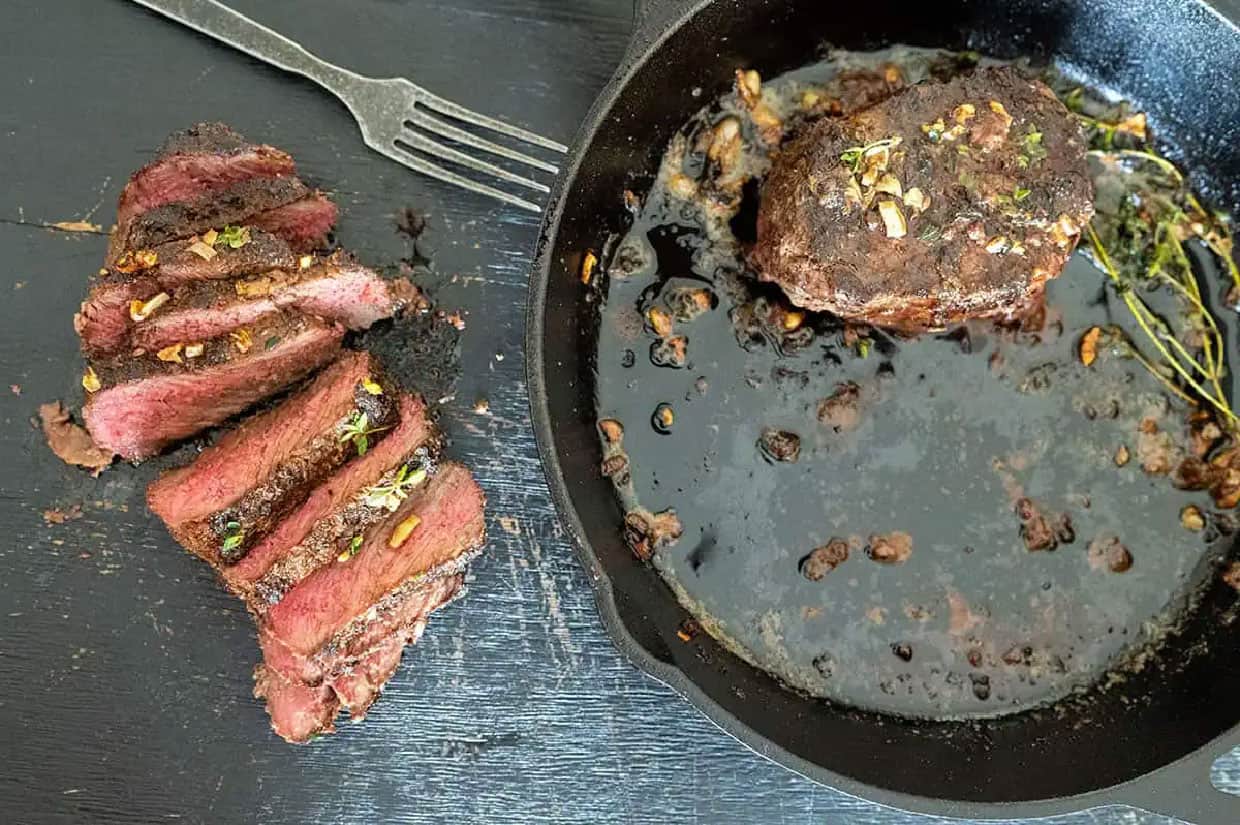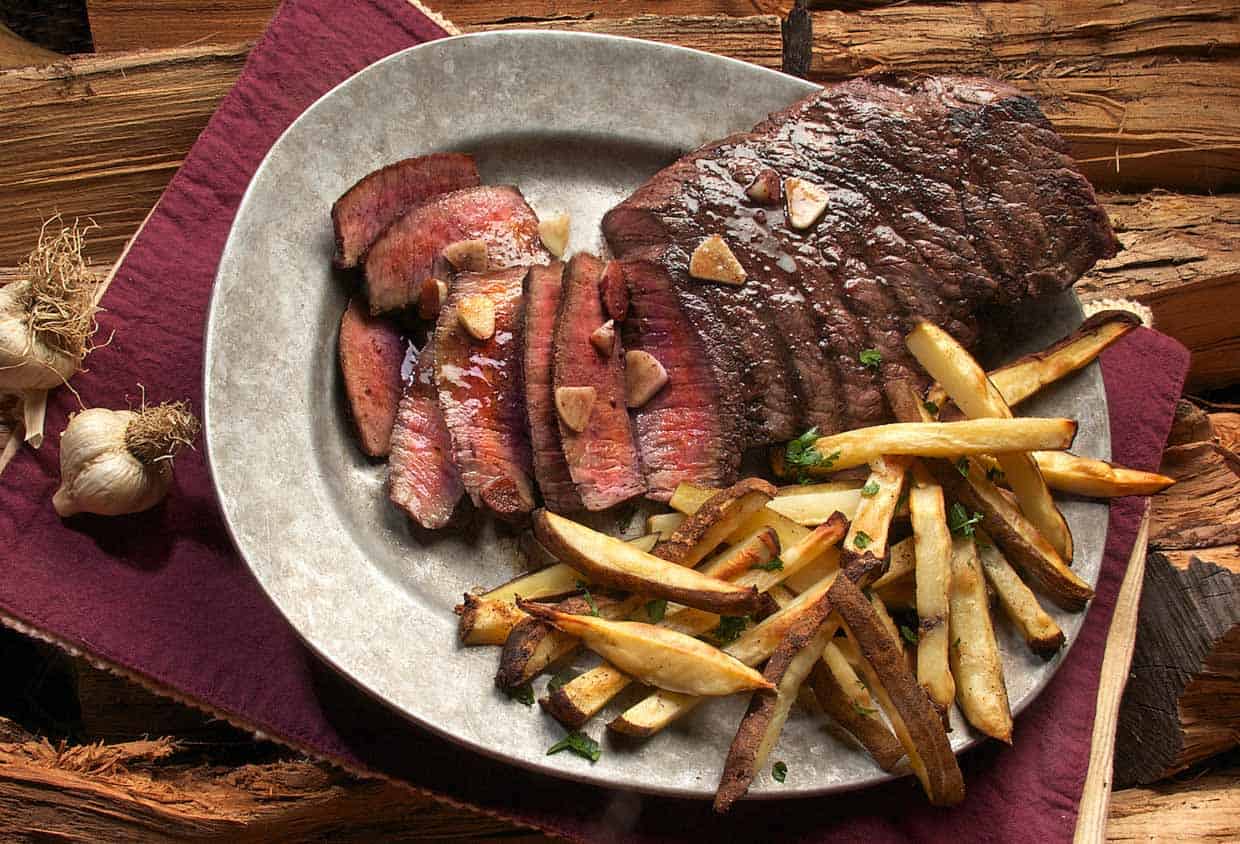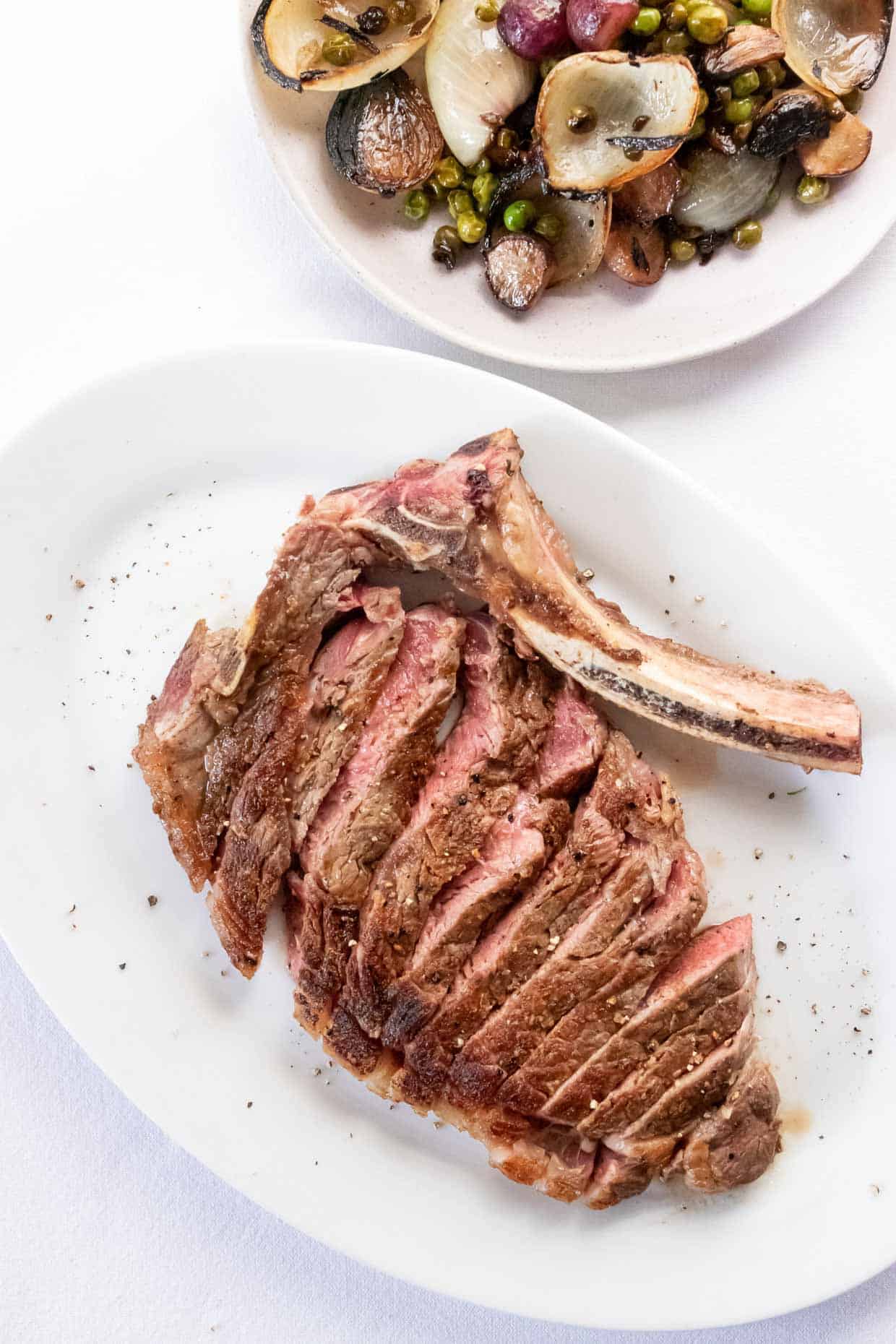In this sizzling steak temperature guide, learn the difference between rare, medium-rare, medium, medium-well and well-done to discover the secrets to cooking your perfect steak to your desired degree of doneness.

Have you ever wondered how to achieve that perfect juicy, tender and flavorful steak? It all comes down to temperature. With this guide, the next time you grill a steak on a charcoal grill or sear steak on a griddle, it will turn out perfectly.
FDL’S 75 Best Bites

Our cookbook with 75 tasty recipes will be your go-to kitchen companion for easy dinners with ad-free recipes right at your fingertips. Crafted by experienced chefs and recipe developers, this collection offers a treasure trove of tried-and-true dishes that make mealtime a breeze.
Get the Recipe: FDL’S 75 Best Bites
USDA safety considerations
Before breaking down different steak doneness levels, it’s important to consider the USDA recommended temperature for cooked steak.
They advise cooking raw beef, including steak, to an internal target temperature of 145 F with a 3-minute resting period. This is considered the safe minimal internal temperature to prevent foodborne illness.
They also recommend using a digital thermometer to get the most accurate temperature reading.
Diners who are very young, elderly, pregnant or have compromised immune systems are most at risk if steaks are prepared below that temperature.
Restaurants around the U.S. offer steaks cooked below 145 F. To do so, the FDA requires them to include a consumer advisory statement on their menus about the risks of eating raw or undercooked items.
So why do restaurants offer steaks cooked below what the USDA recommends?
Because steaks cooked to medium-rare or rare have a more enjoyable mouthfeel, taste and texture for many diners. Plus, the restaurants are confident in the safety protocols followed while sourcing their meat.
If you plan to cook your steak at home below the USDA recommended temperature of 145 F, be sure to choose beef from a quality meat source.
Then, season it with a good steak rub and cook it in a skillet or on a grill or griddle.
If you’re concerned about going below that temperature or you fall into the high-risk category, you can also obtain great tenderness, juiciness and flavor by cooking beef that’s graded USDA prime. Certain cattle breeds like Angus and Wagyu are also known for more marbling and better tenderness.

Steak Doneness Levels
Some experienced chefs can tell a steak’s doneness by feeling it. If you press on the steak, the proteins will be looser the rarer it is. As it cooks, the steak will become firm.
The most accurate way to measure the internal temperature of a steak is to use an instant-read thermometer.
While the steak is cooking, insert the meat thermometer through the side into the center of your steak. Make sure the tip of the thermometer is surrounded by meat. If it touches bone, gristle or fat, the temperature can be skewed.
Blue steak
- Temperature: 115-120 F
- Color: Bluish-red inside with a quick thin sear outside
- Tenderness: Can be chewy depending on the cut
Rare steak
- Temperature: 120-125 F
- Color: Bright red center with slight char on the outside
- Tenderness: Very soft
Medium-rare steak
- Temperature: 130-135 F
- Color: Warm red center with more browning on the edges
- Tenderness: Evenly soft and tender
Medium steak
- Temperature: 135-145 F
- Color: Light pink center with a thicker ring of brown
- Tenderness: Soft in the center with firm edges
Medium-well steak
- Temperature: 145-155 F
- Color: Light brown with a touch of pink in center
- Tenderness: Stiff
Well-done steak
- Temperature: 155 F plus
- Color: Brown all the way through
- Tenderness: Firm and chewy
“When it comes to a perfectly cooked steak, there are several factors that come into play. The heat of the cooking surface, the starting temperature of the steak, your desired finished temperature, the thickness of the steak and the environment. These all play a crucial role in cooking your steak exactly the way you like it. A thicker steak needs more time to reach medium rare than a thin cut. And a steak being grilled over a fire in the rain may take longer than one in the convection heat of an oven. It’s important to understand how these things can all make or break your delicious meal.”
– Kita R., Girl Carnivore

Resting and carryover cooking
Once the meat is removed from the heat, the steak will continue to cook. This is called carryover cooking.
To compensate for carryover cooking, remove your steak from the heat when it is a few degrees below your desired temperature.
Is the red color in medium-rare beef blood?
No. The red color comes from a pigment called myoglobin, which is a protein found in muscle tissue that helps deliver oxygen to the muscles.
Raw beef appears red because the myoglobin is in its natural state. When heat is introduced to the meat, the myoglobin undergoes a chemical change.
The next time you’re cooking steak, consider these tips and cook to your desired temperature.
If you source great quality beef and don’t fall into a high-risk category, try cooking it to medium-rare for a flavorful steak that is guaranteed to be juicy and tender.
Now that you’ve mastered cooking steak, learn how to grill the perfect burger on a gas, charcoal or pellet grill.